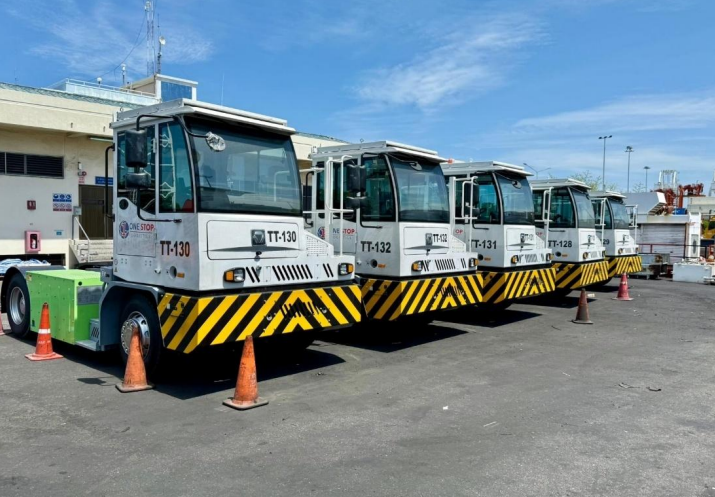DP World has expanded its decarbonisation drive with the introduction of five electric internal transfer vehicles (eITVs) at Laem Chabang International Terminal (LCIT) in Thailand.
The new fleet, the first of its kind at LCIT, is expected to cut carbon emissions by around 60% compared with diesel-powered vehicles. DP World plans to fully convert its internal transfer fleet to electric by 2030, reducing the terminal’s overall carbon footprint by approximately 12% against 2022 levels.
The initiative is part of the Port Authority of Thailand’s Green Port Strategy, which seeks to make Laem Chabang a carbon-neutral port by 2030. Alongside vehicle electrification, DP World has begun on-site solar generation projects at its Container Freight Station warehouse and other key facilities at the terminal.
“This is an important step forward for both DP World and LCIT. With the support of the relevant authorities, we’ve been able to bring these eITVs to life,” said Glen Hilton, CEO & Managing Director, Asia Pacific, DP World. “Deploying these eITVs marks a critical milestone in our decarbonisation journey, demonstrating that operational excellence and environmental stewardship can go hand in hand.”
Beyond cutting emissions, the eITVs are designed to improve operational efficiency by enabling faster container transfers between vessels and the yard, shortening vessel turnaround times and boosting terminal productivity.
DP World has rolled out similar electrification projects across its global network, including at Port of Brisbane in Australia and Manila South Harbour in the Philippines, reinforcing its commitment to decarbonising port operations worldwide.





















